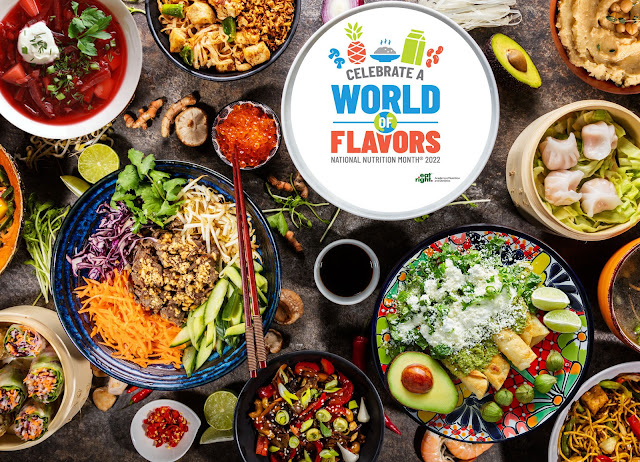POLICY:
Historically, definitions have been developed for different types or combinations of vinegars. The United States FDA requires that any product called "vinegar" contain at least 4% acidity. This requirement ensures the minimum strength of vinegar sold at the retail level.
FDA considers the following to be satisfactory guidelines for the labeling of vinegars: Natural vinegars as they come from the generators normally contain in excess of 4 grams of acetic acid per 100 mL. When vinegar is diluted with water, the label must bear a statement such as diluted with water to _______ percent acid strength", with the blank filled with the actual percent of acetic acid - in no case should it be less than 4 percent. Each of the varieties of vinegar listed below should contain 4 grams of acetic acid per 100 mL.
Food Preparation
1. Soak fish in vinegar and water before cooking it. It will be sweeter, more tender and hold its shape better. When boiling or poaching fish, a tablespoon of vinegar added to the water will keep it from crumbling so easily.
2. Use vinegar in pickling, vinaigrettes, marinades and as an ingredient in sauces such as mustard, ketchup and mayonnaise.
3. When boiling an egg and it's cracked, a little vinegar in the water will keep the white from running out. (Forget this one. If the egg is cracked, throw it out.)
4. A teaspoon of white distilled or cider vinegar added to the water in which you boil potatoes will keep them nice and white. You can keep peeled potatoes from turning dark by covering them with water and adding 2 teaspoons of vinegar.
5. Freshen up slightly wilted vegetables by soaking them in cold water and vinegar.
6. Fruits and vegetables. Add 2 tablespoons white distilled vinegar to 1 pint water and use to wash fresh fruits and vegetables, then rinse thoroughly. This is supposed to help kill bacteria on fruits and vegetables.
7. Flavor Enhancer. Add your favorite specialty vinegar to soup, gravy or sauce to add flavor.
8. Use as a meat tenderizer for tough meat or game.
9. Simmer a small pot of vinegar and water solution to get rid of unwanted cooking smells.
10. Rice will be fluffier and less sticky if you add a teaspoon of white distilled vinegar to the boiling water before adding the rice.
11. Remove fruit stains from your hands by cleaning them with vinegar.
12. Remove heavy stale smells from lunch boxes by dampening a piece of fresh bread with white distilled vinegar and leaving it in the lunch box overnight.
Cleaning
1. White vinegar is often used as a household cleaning product. The acidity is said to dissolve mineral deposits from glass, coffee makers and other smooth surfaces. Dilution with water is recommended for safety and to avoid damaging the surfaces being cleaned.
2. Vinegar can be used for polishing brass or bronze.
3. Vinegar has been marketed as a green solution for some household cleaning problems, such as an eco-friendly urine cleaner for pets and as a weed killer.
Medical
1. Experts advise against using vinegar preparations for treating wounds.
2. Acetic acid solutions were ineffective at inhibiting the growth of Escherichia coli, group D Enterococcus, or Bacteroides fragilis bacteria, and only slightly effective at inhibiting the growth of Staphylococcus aureus and Pseudomonas aeruginosa bacteria.
3. Experts caution against using vinegar as a household disinfectant against human pathogens because chemical disinfectants are more effective.
4. Undiluted vinegar may be used effectively for cleaning dentures, unlike bleach solutions, vinegar residues left on dentures were not associated with mucosal damage.
5. Vinegar is commonly recommended for treating nail fungus, head lice, and warts, however scientific support for these treatment strategies are lacking.
6. Vinegar may reduce hunger by reducing the meal-time glycemic load.
7. The use of vinegar in controlling blood sugar as an adjunct therapy for individuals with diabetes or prediabetes has yet to be determined.
Fat Free Vinaigrette Recipes are easy to prepare and can be used as a marinade, salad dressing, or sauce.
Balsamic Vinaigrette Dressing, Yield: 1 cup; Serving Size: Unlimited
3/4 cup water
1/4 cup balsamic vinegar
2 teaspoons capers
2 teaspoons Dijon mustard
1½ teaspoons dried basil
1 tablespoon fresh parsley, chopped
Combine the ingredients. Adjust vinegar to taste. Store in a covered container in the refrigerator.
Chili-Cilantro Vinaigrette Dressing, Yield: ¾ cup; Serving Size: Unlimited
1 small green chili, diced
¼ cup chopped fresh cilantro
¼ cup water
¼ cup fresh lime juice
1 clove garlic
pinch, artificial sweetener
freshly ground pepper to taste
Place all of the ingredients in a food processor or blender. Blend until smooth.
Citrus Herb Vinaigrette Dressing, Yield: 1½ cup; Serving Size: Unlimited
½ medium-sized red bell pepper,
2 medium tomatoes, diced
½ cup loosely packed fresh basil leaves, chopped
2 cloves garlic, minced
½ cup fresh orange juice
½ cup loosely packed fresh parsley
¼ cup raspberry vinegar
1 Tablespoon dry mustard
2 teaspoons fresh thyme leaves
2 teaspoons fresh tarragon
2 teaspoons fresh oregano
Combine all ingredients in a blender or food processor and blend until pureed. Makes approximately 1½ cups
Indian Vinaigrette Dressing, Yield: ¼ cup; Serving Size: Unlimited
¼ cup orange juice
¼ teaspoon ground coriander
¼ teaspoon chopped cilantro
½ teaspoon prepared hot mustard
Put all ingredients in a small bowl, and stir. Let sit about 10 minutes.
Orange and Lemon Vinaigrette, Yield: 1 cup; Serving Size: Unlimited
½ cup wine vinegar
4 Tablespoons lemon juice
4 Tablespoons orange juice
grated rind of 1 lemon
½ teaspoon French mustard
pinch garlic
ground black pepper to taste
Place all ingredients in a bowl, and mix thoroughly. Keep in the fridge and use within 2 days.
Orange Thai Vinaigrette Dressing, Yield: ½ cup; Serving Size: Unlimited
5 Tablespoon orange juice
1 teaspoon minced ginger
1 teaspoon minced garlic
1 Tablespoon low sodium soy sauce
¼ cup rice vinegar
pinch of cayenne
Whisk together all ingredients with a fork.
Parsley-Tomato Vinaigrette Dressing, Yield: ¾ cup; Serving Size: Unlimited
¼ cup tomato juice (low sodium)
Pinch of cayenne pepper
¼ cup red wine vinegar
½ teaspoon oregano, fresh
1 Tablespoon onion, minced
½ teaspoon black pepper
¼ cup parsley, chopped fresh
½ cup tomatoes, chopped, fresh
1 garlic clove, minced
Place all ingredients in a blender or food processor. Process until smooth.
Red Pepper Vinaigrette, Yield: ½ cup; Serving Size: Unlimited
¼ cup apple juice
¼ cup cider vinegar
2 tablespoons white onion
1 cloves garlic, pressed
Pinches of rosemary and thyme
½ teaspoon dried whole oregano
½ teaspoon dry mustard powder
½ teaspoon paprika
½ of a roasted red bell pepper
Mix in a blender. Blend thoroughly and chill overnight.
Tomato Vinaigrette, Yield: ½ cup; Serving Size: Unlimited
½ cup tomato, chopped
2 Tablespoons white wine vinegar
½ teaspoon dried basil
½ teaspoon dried thyme
½ teaspoon Dijon mustard
Mix in a blender. Blend thoroughly and chill overnight. Lasts about 2 days. Serve on salads.

























